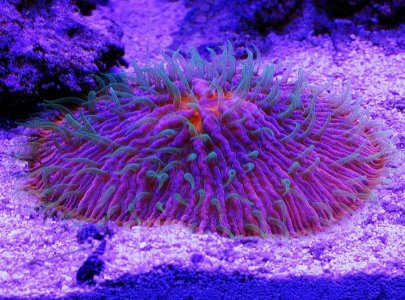i am itching to take a few pics of my reef tank...
Excellent! Do it!
Even if you feel you can't nail the final image yet, going through the process will help. Solving the particular issue(s) you have with your pic is a great way to learn. Often the images with which one struggles most are the ones which are the best learning opportunities. And there is a ton of information to be absorbed if one chooses.
I suggest starting with understanding the "holy trinity" of exposure - aperture, shutterspeed and ISO and how changing one will necessitate a change in one or both of the other two to compensate, assuming one is looking for similar exposure. Those relationships are at the heart of photography, and fundamental image goodness starts there.
For example, try shooting a pic in aperture priority mode (Av) at your widest opening (smallest f number) and then at your narrowest (highest f number). See how changing the size of the lens hole made the amount of available light change, so shutterspeed or ISO had to be adjusted.
Most importantly, see how the depth of field in the image changed. At your widest aperture, lots of light gets in (good for exposure), but the depth of field (the amount of the pic in focus around the focal plane) is very shallow. At your narrowest aperture, less light gets in (need slower shutterspeed to allow for longer exposure to compensate for less light), but a great deal more of the image is in focus around the focal plane.
Once you understand exposure, if you wish to take pictures of reef tanks and you want the colors in the picture to resemble what you see in the tank, you're probably going to need to adjust the white balance. There are several ways to do that. IMHO, shooting in RAW mode and adjusting the white balance during post processing is the easiest and most accurate. If doing that is not familiar to you, look into it and try it. I like RAW so much I shoot all my images in it, reef or otherwise. It gives one a much greater control over the image than simply accepting the in camera processing that produces a jpg file.
With a jpg produced by the camera, the data captured by the image sensor data is automatically processed in camera (white balanced and compressed) to yield the picture which is saved in jpg format.
With a RAW file, the image sensor data itself is saved in the file, and no automated white balancing or compressing of the image has occurred. A human then opens the file in image processing software (your camera came with some. I like Lightroom) and can make the adjustments he / she feels are appropriate to create the final jpg image.
And when you've mastered the technical aspects of photography, there's always the subjective aspect of composition. Great photos have interesting composition in addition to competent technical execution.
There are many online resources to help with all this, including the people here who are helpful and kind. Some may even chime in with their favorite photo sites (hint hint). The stickies here are valuable as faithenfire said. The amount of information can seem overwhelming at first but just focus on your immediate basic needs to start and expand as your comfort grows.




